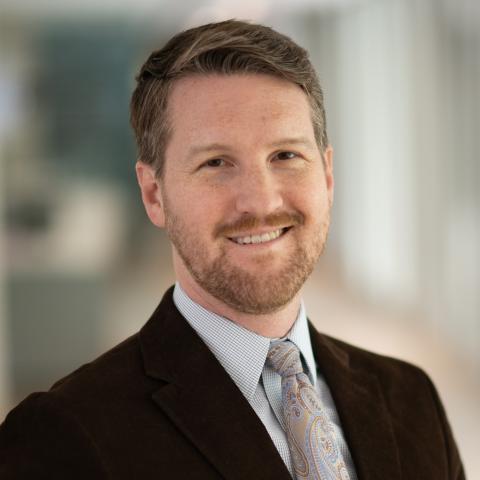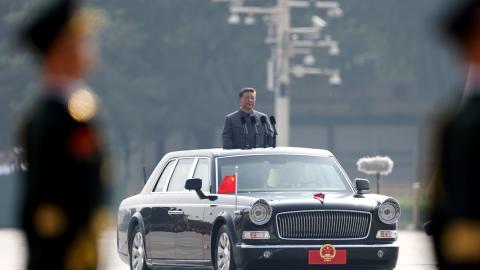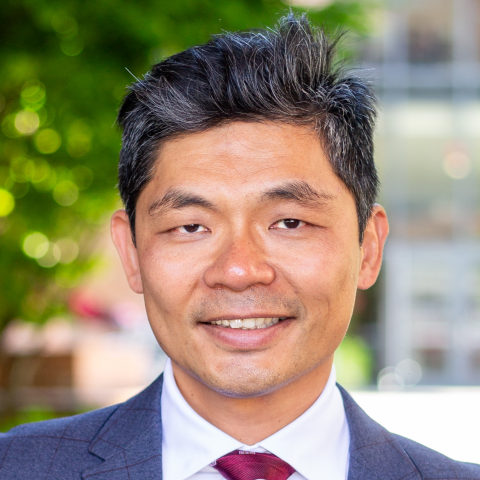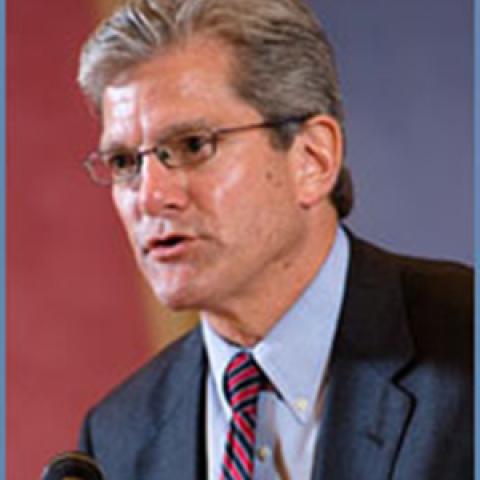Last September, The American Conservative magazine engaged in an email interview with Professor Thomas C. Leonard about his new book, Illiberal Reformers: Race, Eugenics, and American Economics in the Progressive Era. The interviewer suggested, rightly, that it’s difficult to avoid connecting the book to current events, since, as he put it, “there is a present-day, self-described progressive movement” still kicking around. Still, for the sake of balance, he asked Professor Leonard to describe a policy from each party “that exemplifies illiberal reform today.”
Professor Leonard quickly rose to the occasion, indeed suggesting that “the West is now facing a crisis of rising illiberalism.” But that crisis, in his view, was most apparent within the Republican Party, not the progressive movement, citing candidate Donald Trump’s now-familiar rhetoric about Muslims, immigrants, and women. As for illiberalism on the progressive side, he cited inclinations toward “excessive land-use regulation and occupational licensing,” though this came nowhere close to the Republican Party’s—as he put it—“spectacularly illiberal agenda.”
As a huge admirer of Professor Leonard’s work, I suggest that he badly undersells his own book as a device for understanding this past month’s shocking political developments. In the first four chapters of the book, Professor Leonard reminds us that the historical American progressive movement was illiberal at its very core.
Late in the 19th century, progress in the natural and social sciences had given rise to the hope that they could be applied to public affairs, producing objective, non-partisan, rational solutions to our problems. But this required governing authority to be shifted away from the democratically elected parts of government, relocating it to centralized administrative agencies. There, appointed professional experts would manage public affairs according to abstract, fact-based, scientifically determined principles of the public interest. The less the democratic electorate was involved in public administration, the better. After all, they hadn’t acquired the horizon-expanding university education of the progressive elites, so their political views were inevitably distorted and diminished by narrow, partisan concerns rooted in ethnicity, religion, and locality.
As economist Irving Fisher argued, quoted by Professor Leonard, “The world consists of two classes—the educated and the ignorant—and it is essential for progress that the former should be allowed to dominate the latter.”
Now, has this fundamentally illiberal and undemocratic assumption vanished from the modern progressive creed, leaving us with only a few quibbles about land-use regulation and occupational licensing? I would suggest not. Indeed, illiberal progressive elitism has only become more pervasive as the gap between the “educated and the ignorant” has widened.
With the rise of think tanks, research universities, and advocacy foundations and nonprofits—the vast, interlocking, insulated complex we’ve constructed to formulate, advocate, and execute public policy—we have only reinforced the barrier between the everyday voter and governance. In order to understand, much less engage in, today’s abstract, detached, and data-saturated discourse of public policy, participants require ever more specialized academic expertise. If a problem can’t be expressed in a statistical formula—with the obliteration of nuance, detail, and local variability this entails—then the problem simply doesn’t exist.
What we now call the “rise of the meritocracy” may have begun well over a century ago. But as it accelerates today, its costs are becoming more apparent. The meritocrats sort themselves out not only socially, but geographically as well, into coastal and university enclaves. There, in a contemporary bow to positive eugenics, they engage in assortative mating. Their children then follow the sheltered path from university day school to Princeton to a career in social entrepreneurship, convinced that they can “change the world,” as the slogan goes, without ever touching down in that vast swath of cultural desolation unhappily separating Nassau Hall from Palo Alto. The distance between the “educated and ignorant” grows ever larger, both literally and figuratively.
Writing in Vox last April, progressive commentator Emmett Rensin argued that this has culminated in what he describes as “the smug style in American liberalism.” The “first premise” of that style, he noted, was “a politics defined by a command of the Correct Facts and signaled by an allegiance to the Correct Culture. A politics of smart people in command of Good Facts. A politics that insists it has no ideology at all, only facts; no moral convictions, only charts.”
From their elite enclaves, Rensin noted, the “educated, the coastal, and the professional” have come to believe that “liberal orthodoxy was a kind of educated savvy” and that its opponents were merely “stupid hicks [who] don’t know what’s good for them.”
In short, as progressives have become ever more convinced of their monopoly upon disinterested reason and science—amply confirmed by agreeable and self-congratulatory conversations strictly amongst themselves—they have become ever more disdainful and contemptuous of the untutored masses.
Progressivism’s “smug style” became particularly apparent during the 2016 election, I would suggest. Educated observers simply could not understand how Donald Trump maintained his support in the face of his transparently false and bigoted pronouncements. So many of them fell back on Irving Fischer’s divide between the educated and the ignorant.
Armed with insights from Illiberal Reformers about the link between progressivism and eugenics, we can even identify eugenic echoes in elite contempt for Trump voters. Political scientists Richard Fording and Sanford Schram suggested that, as the Washington Post headline put it, “‘Low information voters’ are a crucial part of Trump’s support,” that is, voters who not only don’t know much, but who even “have less interest in using ideas to understand politics.” A neuroscientist from George Mason University proposed a whole range of mental deficiencies that might explain Trump voters, including the Dunning-Kruger Effect—essentially, being so stupid that they didn’t realize just how stupid they are. The inventor of Sabermetrics, a baseball statistics tool, went full-out eugenics, assuring us in April that “there aren’t enough ‘morons’ to elect Trump.” Even the mild-mannered New York Times journalist David Brooks despaired of the likelihood that Trump voters would ever listen to reason, because they were “just going with their gene pool.”
If you doubt the pervasiveness of quasi-eugenic rhetoric to explain Trump support, Google will (as always) quickly settle the question with searches for “Trump voter idiots” or “Trump voter morons.”
Speaking of eugenics, and going back to Professor Leonard’s interview, perhaps one reason he downplayed the pervasive illiberalism of toda'’s progressivism is that he focused primarily on historical progressivism’s eugenic hostility to African Americans, women, and people with disabilities. This provides an easy out to modern progressives: That’s old news, we don’t believe that anymore, so let’s move on. But as we learned during the election from a couple of surprise best-selling histories—namely, Nancy Isenberg’s White Trash: the 400-Year Untold History of Class in America and Matt Wray’s Not Quite White: White Trash and the Boundaries of Whiteness, progressivism has also exhibited a disturbing obsession with defective protoplasm among low-income, working-class whites. Indeed, eugenics was particularly valuable, according to its advocates, because it scientifically unearthed strains of feeble-mindedness among whites, who otherwise bore no conspicuous marks of gender or racial inferiority.
But eugenics, we learned from Isenberg and Wray, is but one episode in a long campaign, going back to the origins of the American republic, to marginalize or even eliminate “white trash”—lubbers, crackers, clay-eaters, rubes, and rednecks—who have long inhabited the South, the mountains, and the countryside.
If the historians of the “white trash” trope are correct, then the Trump voters located in those very same geographic regions were not just reacting against the neglect of their immediate economic concerns—the failure of abstract policy discourse to capture and express their anguish over communities destroyed by elite-driven economic and cultural changes. They were also using their ballots to strike back against an elitist arrogance and disdain they’ve experienced for centuries.
Extrapolating from Professor Leonard’s treatment of illiberal progressivism, including its oft-neglected eugenic inclinations, we could have found a great deal to help us understand the election of 2016. As he suggested in his American Conservative interview, there’s no equivalence between bigoted slurs against women and minorities, on the one hand, and problematic land use policy on the other. But there’s more to weigh in the balance. Progressive elitism still considers problematic the participation of the “ignorant” in the formation of public policy. That’s especially true when the judgment of manifestly objective and disinterested experts is diluted with the ill-informed prejudices of white working-class voters—“white trash”—who have long been the target of progressive contempt.
It’s hardly an effort to “normalize” Trumpian prejudice to insist that progressivism still carries within it a deeply illiberal political impulse.




















